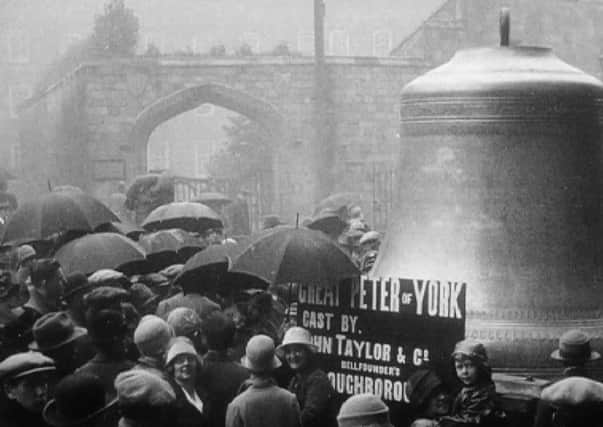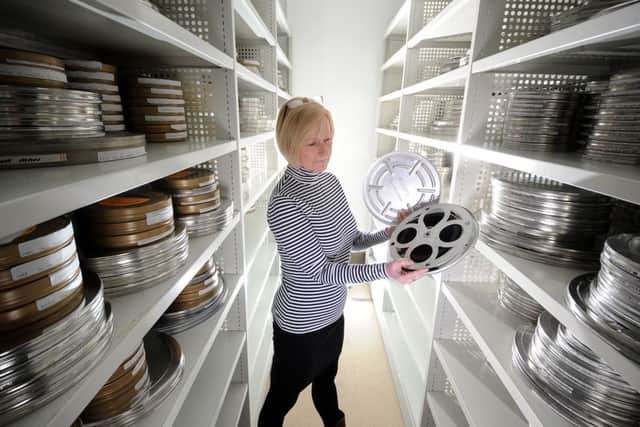Appeal to save more of Yorkshire’s film heritage before deterioration consigns ‘people’s archive’ to oblivion


But time and the technical limitations of the age have weathered the old footage, and the bewigged judge making his way from his lodgings in Lendal to the Assizes now looks like a character from the Benny Hill Show.
The Yorkshire Film Archive, which has restored and preserved the 1924 movie, is marking its 30th anniversary as custodian of the region’s celluloid heritage, with an appeal to help capture other such scenes for posterity.
Advertisement
Hide AdAdvertisement
Hide Ad“This is about creating a permanent legacy for everyone to see and enjoy far into the future,” said Graham Relton, the archive’s manager.


“It is the people’s heritage. We want to care for it and make it available, and that’s not necessarily cheap.”
The 1924 footage was beset with problems from the day it was shot by G Trafford Drayton of York’s Tower Cinema. Technical issues caused the action to be speeded up, and damage to the inflammable nitrate film has partially obscured the image.
But Mr Justice Talbot’s arrival from the judges’ lodgings – now a hotel – in a state coach pulled by two horses and accompanied by costumed attendants, survives.
Advertisement
Hide AdAdvertisement
Hide AdA policeman on horseback escorts the carriage down Clifford Street and two trumpeters announce his arrival.
The prison which stood for a century before its demolition in 1934, was built to cope with increasing numbers of felons in York. It enclosed the entire castle site, including Clifford’s Tower, and cut it off from the city.
A car park – currently the subject of controversial redevelopment proposals – stands there now, although last summer it was taken over by a pop-up Shakespearean theatre, which will return this year.
The Film Archive’s library also includes footage from 1927 of the arrival at York Minster of “Great Peter”, an 11-ton bell said to be the third largest in England. It arrives on the back of a truck and is slid off on timber ramps as the choir sings in the rain on the steps.
Advertisement
Hide AdAdvertisement
Hide Ad“There are also films of the centre of York from the 1930s and a colour film from 1970 called The Queen of English Cities,” Mr Relton said
“It’s fascinating to see the changing fashions and cars, although the architecture doesn’t change in the way it does in other cities.”
Sue Howard, the archive’s director, said more preservation work was needed to prevent the old footage from further deterioration
She said: “Time is running out. The original collections are already deteriorating. We need to undertake vital preservation work, as well as digitising the collections so that we can make them accessible.”
Advertisement
Hide AdAdvertisement
Hide AdThe Archive, whose total collection covers around 30,000 items spanning 120 years, from all over the county, is a charity partly funded by the National Lottery. Its anniversary appeal aims to secure a further £10,000 from public subscriptions by the spring, especially in its home city, via a fundraising website.
Mr Relton said: “At the heart of all our work are the collections – millions of feet of film. Captured on each of those frames of film is the story of Yorkshire – the lives, landscapes, people and places that are so familiar to us all.”
The organisation began life with just 30 amateur films on a single shelf in the wine cellar of St John’s College in Ripon, before moving to the new York St John University.
“I don’t know why the old college had a wine cellar but it was actually really good. It was cool and dry, and those are exactly the conditions you need to store film,” Mr Relton said.
Advertisement
Hide AdAdvertisement
Hide AdMany films – including some originally produced as news footage by Yorkshire Television – have been digitised and are available to view online, but the process costs around £1,000 for each half hour.
The digitised films can be viewed at www.yorkshirefilmarchive.com.